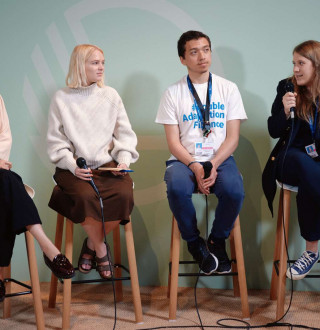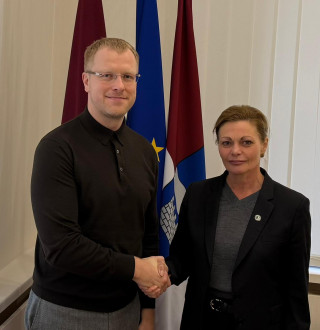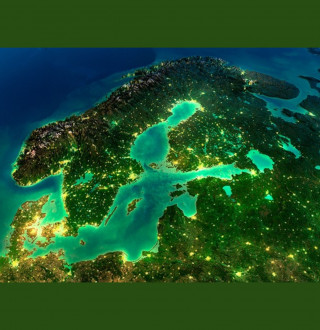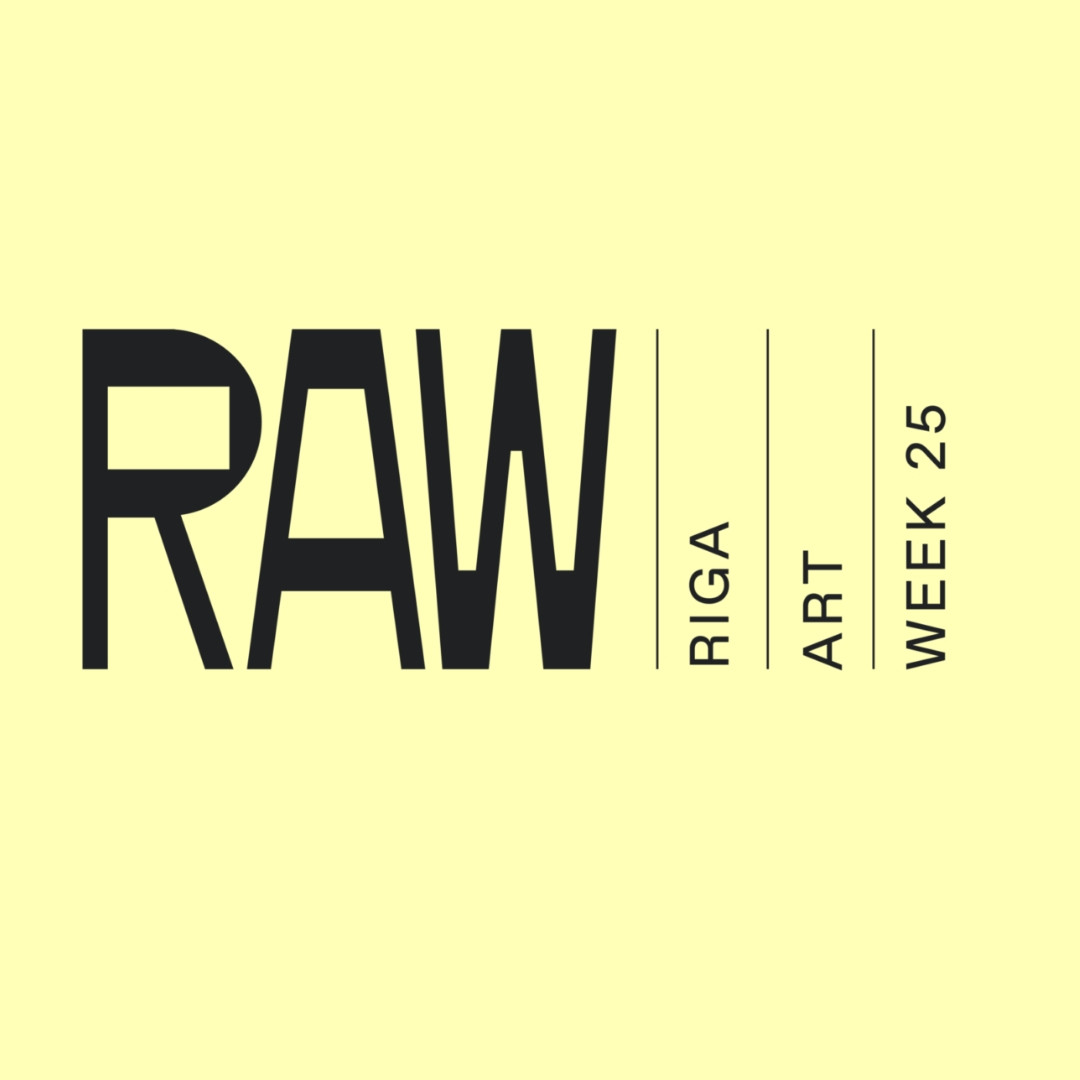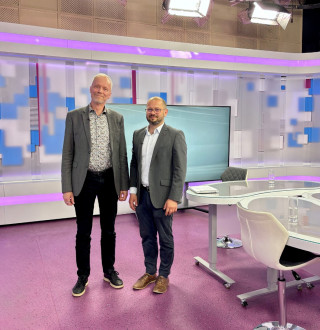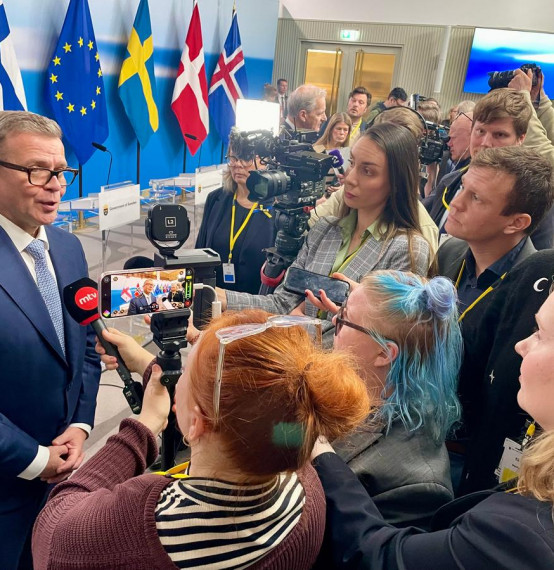From 26 May until 1 June, the first-ever Riga Art Week (RAW 2025) took place at multiple art venues and spaces across Riga. The Nordic Council of Ministers’ Office in Latvia supported two events during RAW 2025: the launch of Ingrīda Pičukānes’ comic book and a digital art exhibition by two Danish artists.
On 27 May, the launch of Ingrīda Pičukānes’ comic book was hosted by the Nordic Council of Ministers’ Office in Latvia, situated at Berga Bazārs. The book “Feminae Explorarum” published by the art house “kuš!”, is a collection of comics, often set in vibrant forest worlds, inhabited by women involved in quiet, personal acts of exploration. Blending myth and realism, the stories embrace experiences such as menstruation, drunkenness, and solitude as significant rather than trivial. The forests are neither untouched nor idealised – they are tangled spaces of nature and human debris, both magical and reflective.
Ingrīda Pičukāne is a Latvian artist know for challenging expectations of femininity, offering a richly subjective and feminist perspective on what it means to genuinely observe and exist.
On 29 May, the exhibition “Digital Twins: Echoes from the Archives” was opened at Berga Bazārs pop-up art space. It featured two digital works by artists Ida Kvetny (DK) and Diana Velasco (DK/ES). At the launching event opening remarks were given by Anna Enemark, Regional Director of the Danish Cultural Institute in Estonia, Lithuania and Latvia, Artist Diana Velasco, and Stefan Eriksson, Director of the Nordic Council of Ministers’ Office in Latvia.
Velasco’s DIGITAL TWINS (2024) raises questions of originality: how is authorship assigned to AI-generated images? Organised as a grid, the wall of faces reveals patterns and consistencies – a bold red lip, a tilted gaze, a pop of green in the frame – as well as creative licence in the form of hollowed cheeks, exaggerated facial features, and pixelation choices. It isn’t clear which decisions were made by the artist and which were made by the AI. Given this collaboration, a question arises: are those self-portraits or something else? Moreover, what does it take to produce a digital twin? The work centres around the original photo that is part of the Danish National Photography Collection.
Kvetny’s AQUA QUANTUM (2025) reinterprets history through AI, placing the mermaid at the centre as she sings to reimagined versions of Apollo – the daughters of Niobe, and other sculptures from SMK – the National Gallery of Denmark Open Archive’s collection of plaster works. This dialogue between mythological figures of the past and contemporary technology forges new connections that challenge linear perceptions of time and history.
Presenting the digital artworks of Diana Velasco and Ida Kvetny at Berga Bazārs pop-up art space gave attendees of the Riga Art Week a chance to learn more about Nordic-Baltic digital art spaces, and offered an opportunity to engage with technologies like AI and generative art capabilities. Moreover, they were intended to foster a global discussion on the role of digital creations in contemporary art.
The exhibition was supported by the Nordic Council of Ministers’ office in Latvia and the Danish Cultural Institute in partnership with Berga Bazārs and the Riga Art Week. The event was managed by Elīna Lazareva.
The exhibition will also serve as an introduction to a larger discussion on digital art at the LAMPA Conversation festival in Cēsis on 20 June at 12:30, as part of a conversation panel hosted by the Nordic Council of Ministers’ Office in Latvia at the Nordic tent Ziemeļsala.
RAW was organised by the Galleries Association of Latvia in collaboration with the Riga Investment and Tourism Agency.
